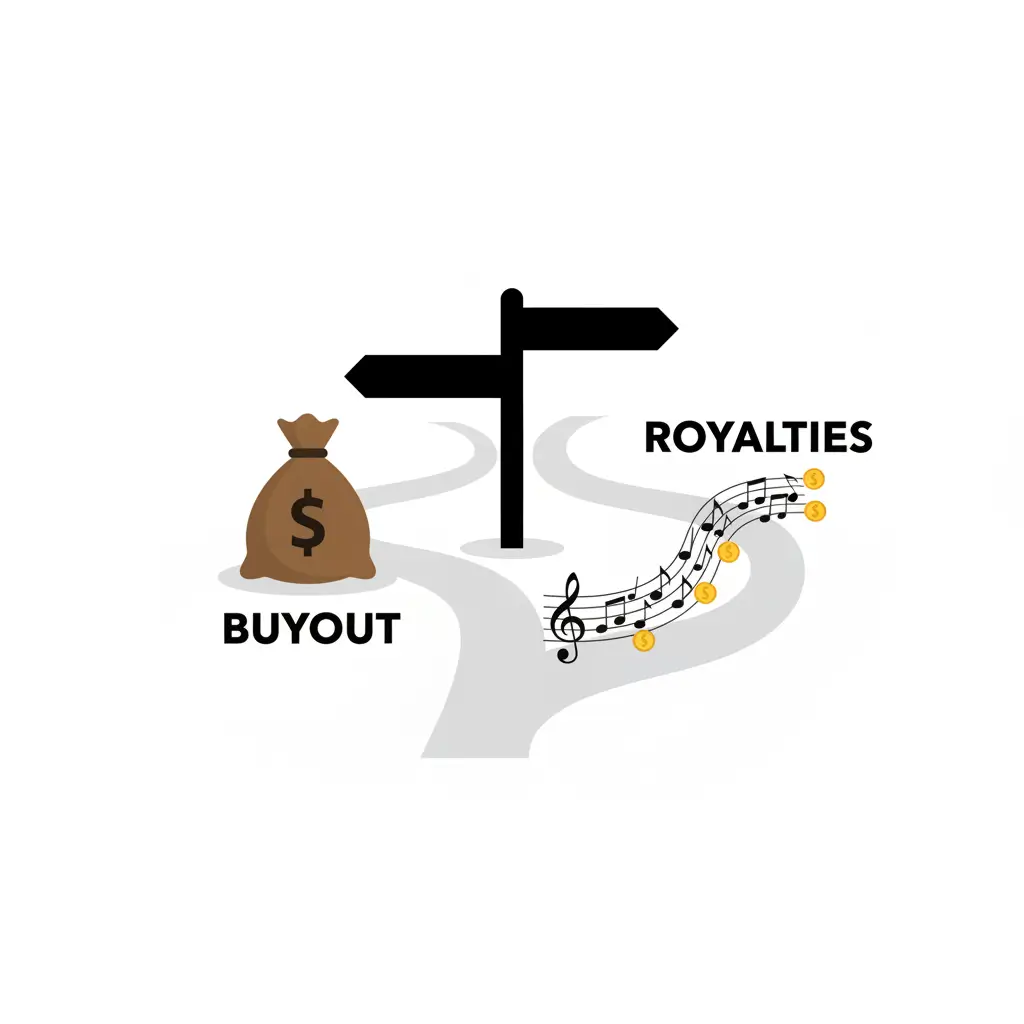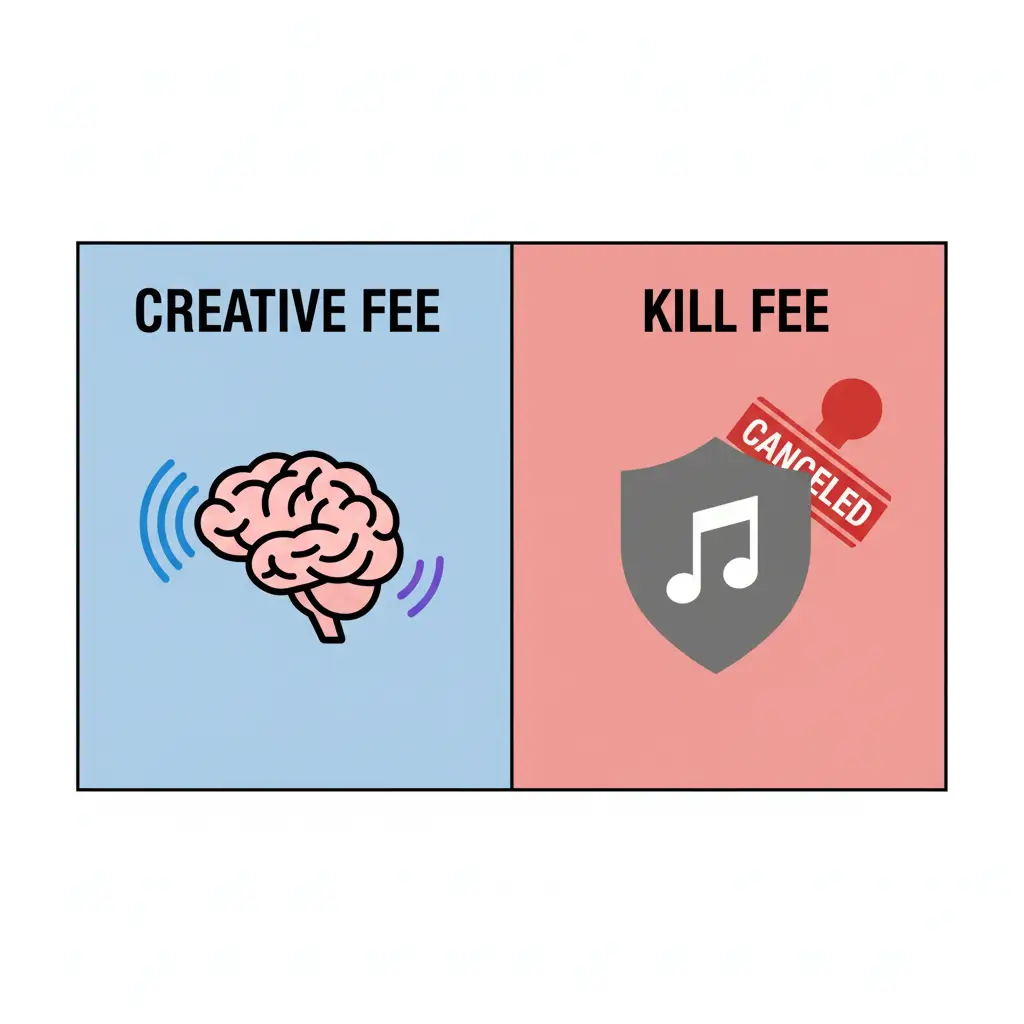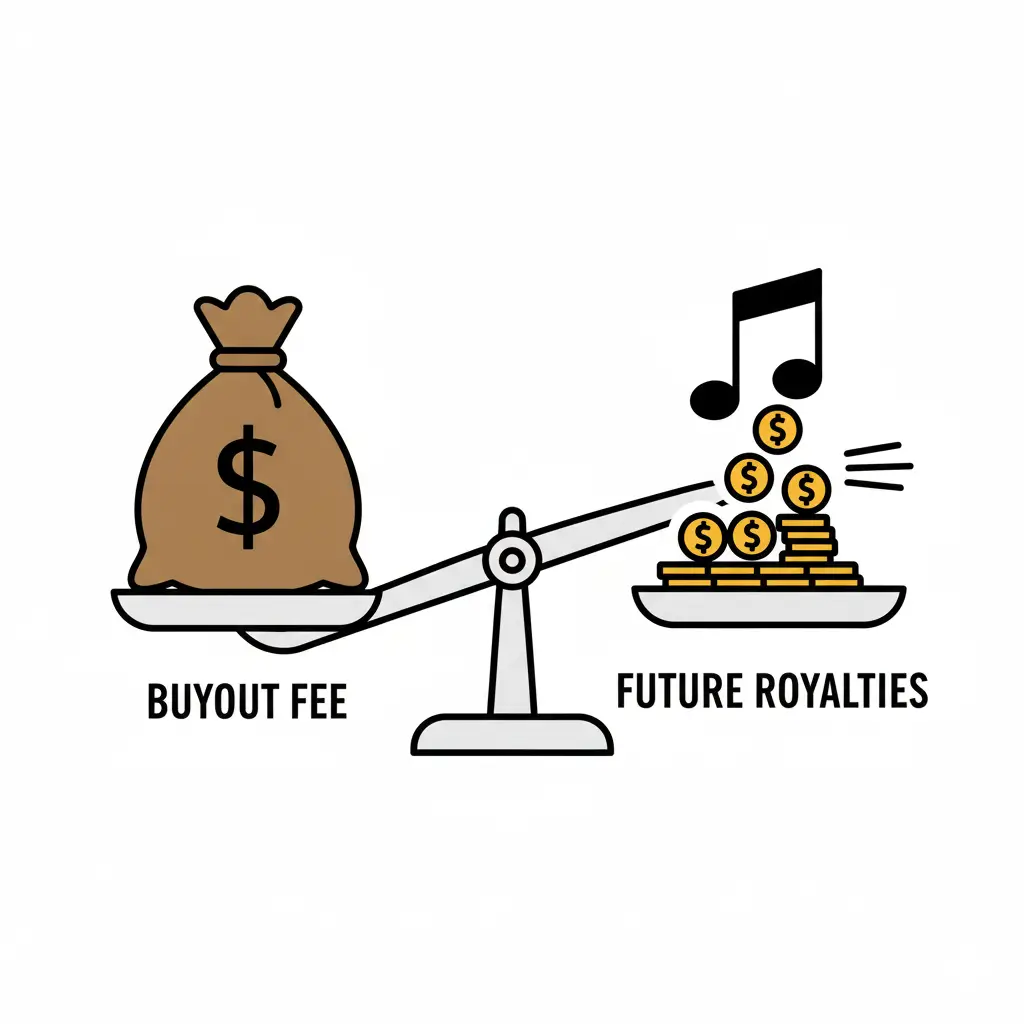This article explains the financial and rights structures common in sonic branding projects, particularly focusing on buyouts versus royalty-based compensation and the distinction between creative fees and kill fees.

It's primarily aimed at helping composers/creators understand these terms💡
✅ 1. Royalties in a Buyout Context

Buyout Definition:
A client pays a single, upfront fee.
In return, the client acquires full rights to the sonic branding work.
The creator "sells" their rights and future royalty income for that specific piece.
The client owns the music outright and can use it across all media/formats without further royalty payments to the creator for that work.
Impact on Royalties:
In a full buyout, the composer does not receive ongoing royalties (from broadcasts, streams, etc.) because they've transferred those rights.
A caveat: if the composer retains some specific rights (e.g., publishing, if negotiated, though less common in full buyouts), or if the contract specifies it, some royalties might still be payable.
Performing Rights Organizations (PROs):
PROs (like ASCAP, BMI) collect performance royalties for composers when their registered music is broadcast (TV, radio).
In a full buyout, these rights are typically assigned to the client, so the composer wouldn't collect these PRO royalties for the bought-out work.
Buyouts vs. Royalties Trade-Off:
Buyout: Offers the composer a guaranteed upfront fee (security) but sacrifices potential long-term income from royalties.
Retaining Rights/Royalties: Offers potential ongoing income if the branding is widely used, but carries the risk of little income if it's not.
✅ 2. Creative Fee vs. Kill Fee

Creative Fee:
The payment for the actual work of creating the sonic branding (composition, sound design, production).
Can be a lump sum or phased payments.
Sometimes includes an upfront "demo fee" for initial concepts.
Kill Fee:
A payment made if the project is canceled by the client after significant work has been done by the composer (often after multiple revisions, when the work was expected to be selected but the project is terminated for reasons beyond the composer's control).
Compensates the composer for their invested time and effort on a project that doesn't reach completion.
Are Creative Fee and Kill Fee the Same?
No.
Creative Fee: For the work if the project proceeds to completion/acceptance.
Kill Fee: A separate, usually smaller, payment if the project is canceled prematurely.
Demo Fee relation: If paid for initial samples, it might be rolled into the creative fee if the project proceeds. If canceled, the demo fee might serve as partial compensation or be considered the kill fee, depending on the agreement.
✅ 3. Summary
Aspect | Description |
|---|---|
Buyout | One-time payment; client owns all rights; no ongoing royalties to composer. |
Royalties | Paid only if rights are retained by the composer; collected by PROs for broadcasts. |
Creative Fee | Payment for composing and producing the sonic branding. |
Kill Fee | Compensation if project is canceled after significant work; separate from creative fee. |
Demo Fee | Paid for initial samples; rolled into creative fee if project proceeds, or retained if not (potentially as part of a kill fee). |
✅ 4. Practical Advice for Composers

Negotiate higher fees for buyouts to compensate for relinquishing future royalties.
Clarify contract terms thoroughly (rights, usage, royalties) before signing.
Expect to provide multiple revisions during the demo phase, often without extra pay (this should be outlined in the agreement).
Understand kill fee terms to protect their work and time if the client cancels unexpectedly.
✅ TL;DR
The explanation is based on insights from experienced composers and industry guidelines.
It reiterates the core theme: the trade-offs between upfront buyout payments and potential ongoing royalty income.

In essence, the article provides a clear guide for composers on navigating common payment structures in sonic branding, emphasizing the importance of understanding contracts and the financial implications of different types of agreements, particularly the widely used "buyout" model.





